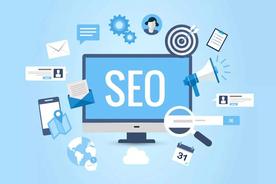
The realm of health and fitness branding and marketing has seen a significant transformation over the past decade, with the advent of digital technologies and the internet. One crucial aspect that has played a pivotal role in shaping this transformation is Search Engine Optimization (SEO). The use of SEO tools has become an integral part of global branding and marketing strategies for companies operating within the health and fitness sector. However, the impact of these tools on user experience remains a topic of debate. This article delves into the influence of SEO tools on user experience within the context of health and fitness global branding and marketing strategies.
To understand the relationship between SEO tools and user experience, we must first grasp the essence of SEO. SEO involves various techniques and strategies aimed at improving a website's ranking on search engine result pages (SERPs). These techniques range from keyword research and optimization to link building and content creation. The primary goal of SEO is to increase website visibility, attract more organic traffic, and ultimately improve conversion rates.
Now, let us consider how SEO tools affect user experience in the health and fitness sector:
1、Relevance and Quality of Content:
One of the most critical factors in SEO is content quality. To rank higher on SERPs, websites must provide valuable, informative, and engaging content that meets users' needs. In the health and fitness industry, this translates into providing accurate information about exercise routines, diet plans, and wellness advice. By utilizing SEO tools such as Google Analytics and Keyword Planner, brands can identify trending topics and user preferences, allowing them to create relevant and high-quality content. This, in turn, enhances user experience by providing visitors with the information they seek.
2、Website Navigation and Usability:
SEO tools also play a vital role in improving website navigation and usability, which directly impact user experience. Tools like Google PageSpeed Insights and GTmetrix help brands assess their website's loading speed, responsiveness, and overall performance. By optimizing website elements such as images, videos, and scripts, brands can ensure faster page load times, which contributes to a smoother browsing experience for users. Additionally, SEO tools like Screaming Frog and SEMrush enable brands to analyze their website's structure, identifying issues such as broken links or duplicate content, thus enhancing website usability.
3、Personalized User Experience:
In recent years, personalization has become a crucial aspect of user experience. SEO tools allow brands to gather data on user behavior, preferences, and search intent, enabling them to tailor their content and services accordingly. For instance, if a user frequently searches for information on plant-based diets, a fitness brand can use this data to recommend vegan meal plans or suggest plant-based protein alternatives. This level of personalization enhances user engagement and satisfaction, leading to increased brand loyalty.
4、Mobile Optimization:
With the rise of mobile devices, ensuring a seamless user experience across different platforms has become essential. SEO tools like Moz Local and BrightLocal help brands optimize their online presence for local search queries, ensuring that their website appears in relevant local search results. Moreover, tools like Google's Mobile-Friendly Test and AMP (Accelerated Mobile Pages) enable brands to optimize their website for mobile devices, providing users with fast-loading, easy-to-navigate experiences on smartphones and tablets.
5、Voice Search Optimization:
Voice search has emerged as a significant trend in the digital landscape, with many users preferring voice commands over traditional typing. SEO tools like AnswerThePublic and AlsoAsked.com can assist brands in identifying long-tail keywords and conversational phrases, allowing them to optimize their content for voice search queries. By doing so, brands can enhance user experience by providing quick and accurate responses to voice searches related to health and fitness topics.
In conclusion, the impact of SEO tools on user experience in the health and fitness global branding and marketing strategies sector is multifaceted. By leveraging these tools to improve content relevance, website usability, personalization, mobile optimization, and voice search optimization, brands can significantly enhance user experience. This, in turn, leads to increased user engagement, higher conversion rates, and ultimately, a stronger brand reputation within the competitive health and fitness industry.
评论列表 (0条)